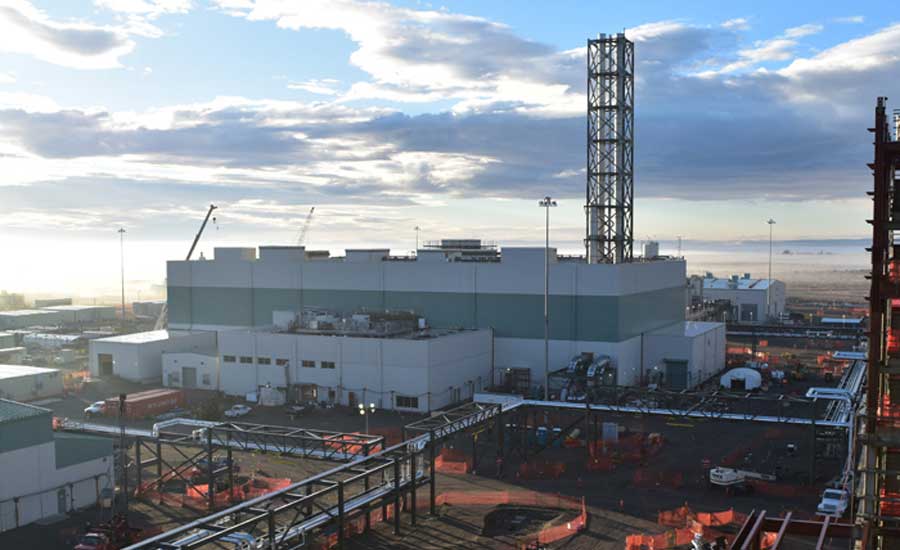Rarely has the nuclear world proven so excited about a caustic scrubber. But at the U.S. Dept. of Energy’s Hanford Nuclear Waste Site in southeast Washington state, the 19-ton piece of vitrification melter offgas exhaust equipment, installed in the Low-Activity Waste Facility at Hanford’s Waste Treatment and Immobilization Plant, known as the Vit Plant, serves as the final piece in the process to treat exhaust. And the first step in finalizing a construction project.
With the installation of the caustic scrubber, crews can complete the subsequent work of installing the remainder of the plant items and equipment needed in the LAW Facility on the way to treating radioactive waste and turning it into vitrified glass for safe long-term storage.
“Not just meeting—but in fact beating—our first contract milestone of the year is an example of our commitment to ensuring we are ready to receive low-activity waste for vitrification as soon as 2022, says Peggy McCullough, Bechtel project director for the TWP Project, in a statement.
To move the 30-ft-tall and 6-ft-dia scrubber into place, it was lowered through the 90-ft-tall roof of the facility.
Three interim contract milestones remain to meet at the LAW Facility, including completing assembly of both 300-ton melters and the installation of bulk electrical cable near the offgas equipment. Bechtel remains on schedule to meet those milestones in the first quarter of 2018. With construction of the facility expect to wrap by June 2018, a multi-year startup, testing and commissioning process will follow in the effort for the LAW Facility to produce about 30 tons of vitrified glass per day when fully operational.
The entire Vit Plant includes the LAW Facility, Analytical Laboratory, High-Level Waste Facility, Pretreatment Facility and a collection of more than 20 support facilities. The Low Activity Waste System will treat radioactive tank waste, likely by 2022, ahead of the full Vit Plant commissioning.
The Hanford Site is home to 56 million gallons of chemical and radioactive waste stored in underground tanks, the result of more than four decades of plutonium production. The vitrification process will turn that waste into glass as part of the cleanup process.
Follow Tim Newcomb on Twitter at @tdnewcomb.


Post a comment to this article
Report Abusive Comment